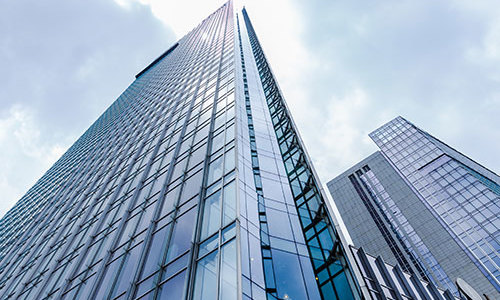The underlayment helps keep the deck dry during installation until the surfacing material can be applied. On a finished roof, it will provide secondary protection from wind-driven rain, ice damming and other types of moisture penetration. It can also help a roof system meet required fire ratings and minimize picture framing, which is the visible outline of deck panels caused by irregularities in roof decking thickness. Underlayment can be divided into two broad categories based upon the technique by which it is affixed to the roof deck. Mechanically attached membranes rely on staples, nails, screws or other types of fasteners to hold them in place. Self-adhered underlayment is comprised of an integrated adhesive layer, usually a polymer-modified asphalt, which bonds directly to the deck beneath it. Self-adhered materials are generally used in valleys, eaves and rakes (sloped sides) where water can back up due to clogged gutters or the accumulation of snow, ice, leaves and other debris. Mechanically attached sheets are used in the field of the roof. However, in certain areas where storms and high wind are prone to lift or remove the roof surface, building codes may require self-adhered underlayment to be used on the entire roof deck. Self-adhered underlayment must perform in a wide range of environments. The adhesive should remain pliable and adhere to the roof deck during installation at temperatures as low as 40°F (4°C), while maintaining thermal stability at conditions above 200°F (93°C). Furthermore, the material should remain completely waterproof, even after penetration by fasteners used to attach the roof surfacing material. Asphalt modified with a small amount of styrenic diene block copolymer (approximately 3-12% by weight) has been used extensively in the industry to achieve the desired performance. Specifically, these mixtures exhibit the small thermal susceptibility needed to provide low- temperature adhesion and high-temperature cohesion, as well as strength, toughness and elastic recovery. The compound most commonly used in this application is a styrenebutadiene-styrene (SBS) block copolymer. Combinations with vinyl and acrylic olefins or other polyolefins are also used. The exact blend will depend on the desired physical properties and applications. Many factors must be considered when formulating these blends. The chemistry of both the base asphalt and polymer strongly affects the efficacy of polymer modification. Both the extent and stability of polymer dispersion in the asphalt matrix can be established with ultraviolet microscopy (qualitative), and/or with “cigar tube” separation tests and creep-recovery measurements on a rheometer (quantitative). Regarding the choice of styrenic polymer, molecular structure (radial/ branched vs. linear), coupling efficiency, molecular weight distribution, degree of hydrogenation and vinyl content can be optimized to improve blending and yield the necessary attributes in the finished product. Other additives may be combined with the styrenic polymers to further enhance adhesion, improve compatibility of the asphalt-polymer blend or reduce the viscosity of the mixture to facilitate manufacturing. Self-adhered underlayments are integral to a roofing system and must meet many requirements to ensure suitability for use. Polymer-modified asphalt is a key component of this composite material, and careful selection of both polymer and asphalt are essential to certify sound performance throughout the service life of the roof. Source:http://asphaltmagazine.com/modifiedasphaltuseroofing/
